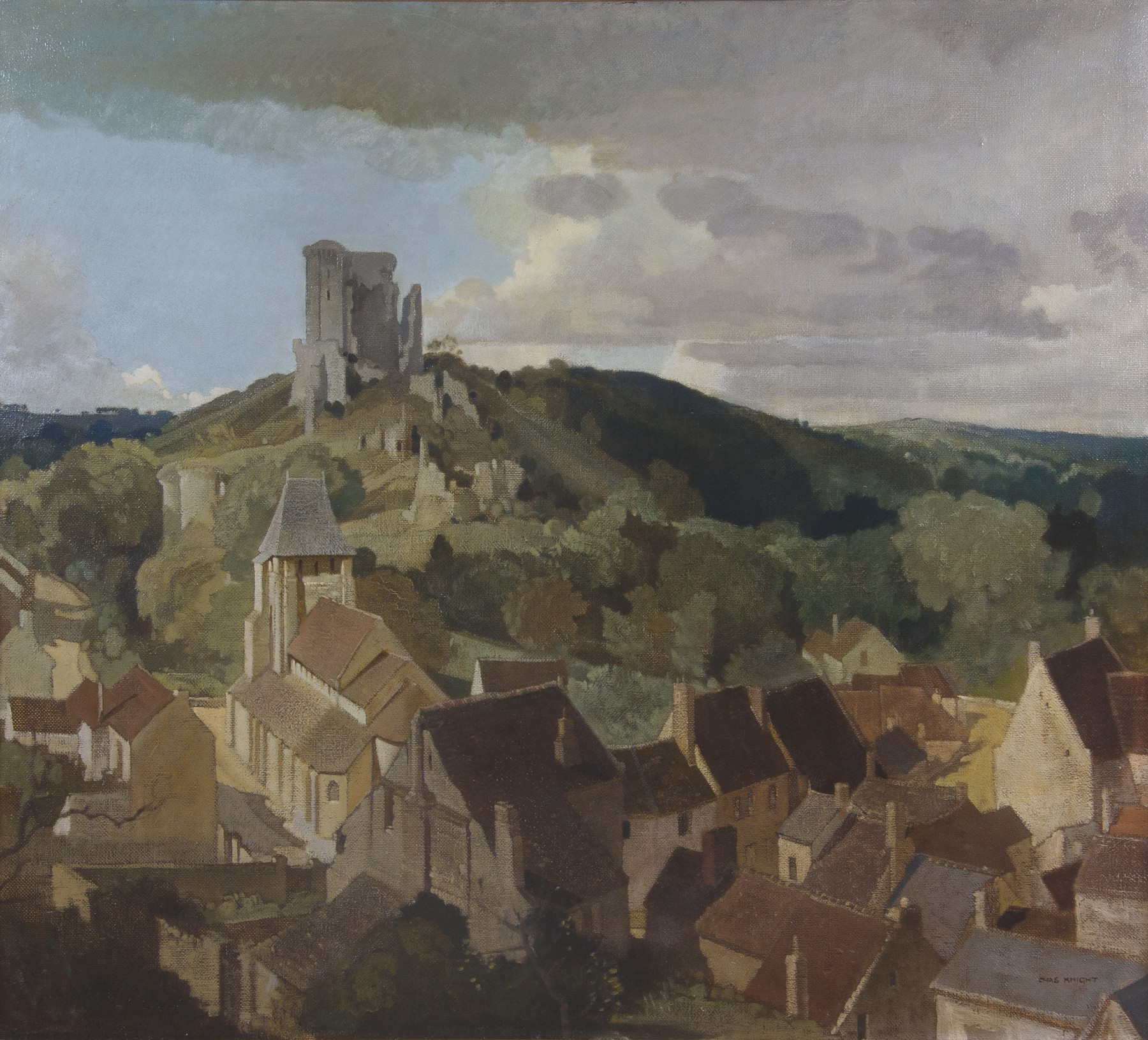
(click image to enlarge)
Lavardin
Charles Knight had made his first four trips to France in the years 1922-25, with his early mentor, the Reverend Gilbert Elliott (and, in visiting Normandy, had partly followed in the footsteps of John Sell Cotman)*. Then, in 1930, he returned to the country, accompanied by his former teacher and fellow painter, Louis Ginnett. Having trained in Paris, Ginnett could provide even more insights into aspects of French art and life than could Elliott. Knight later reminisced that we often went on sketching holidays together, and through him I acquired a much greater understanding and appreciation of European culture' (R T Hodges-Paul, 'Charles Knight VPRWS ROl', The Old Water-Colour Society's Club, vol XXXVI, 1961, page 49).
Knight and Ginnett spent most of their time in the area southwest of Paris, both in Chartres and in towns and villages of the Loir-et-Cher: Vendôme, Montoire-sur-le-Loir and Lavardin. Knight's exhibits during the following few years demonstrated how much he had gleaned from the experience. In addition to his solo show of watercolours, oils and etchings, held at the Clarence Gallery, Brighton, in November 1932, he exhibited several watercolours of these places at the Royal Society of Painters in Water-Colours. However, the most significant result of the painting trip was probably the present oil of Lavardin, which he showed at Brighton Art Gallery in 1931 and at the Royal Academy of Arts in 1937. While he used watercolour to make a wide variety of stylistic and technical experiments, he reserved oil for his more classical Cotman-inspired statements.
Knight's almost birds-eye view of Lavardin looks south-westwards across the roofs of the town hall and the Church of Saint-Genest to the ruined Château de Lavardin. Initially built by Solomon of Lavardin in the eleventh century, the château was transformed by the Comes de Vendôme between the late fourteenth and mid fifteenth centuries. Having been taken by members of the Catholic League in 1589, during the French Wars of Religion, it was dismantled in 1590 on the order of Henri IV, who was Duc de Vendôme as well as King of France.
* For examples of Charles Knight's landscapes of Chartres and Montoire, please refer to A Century of British Art, volume 1, page 100.